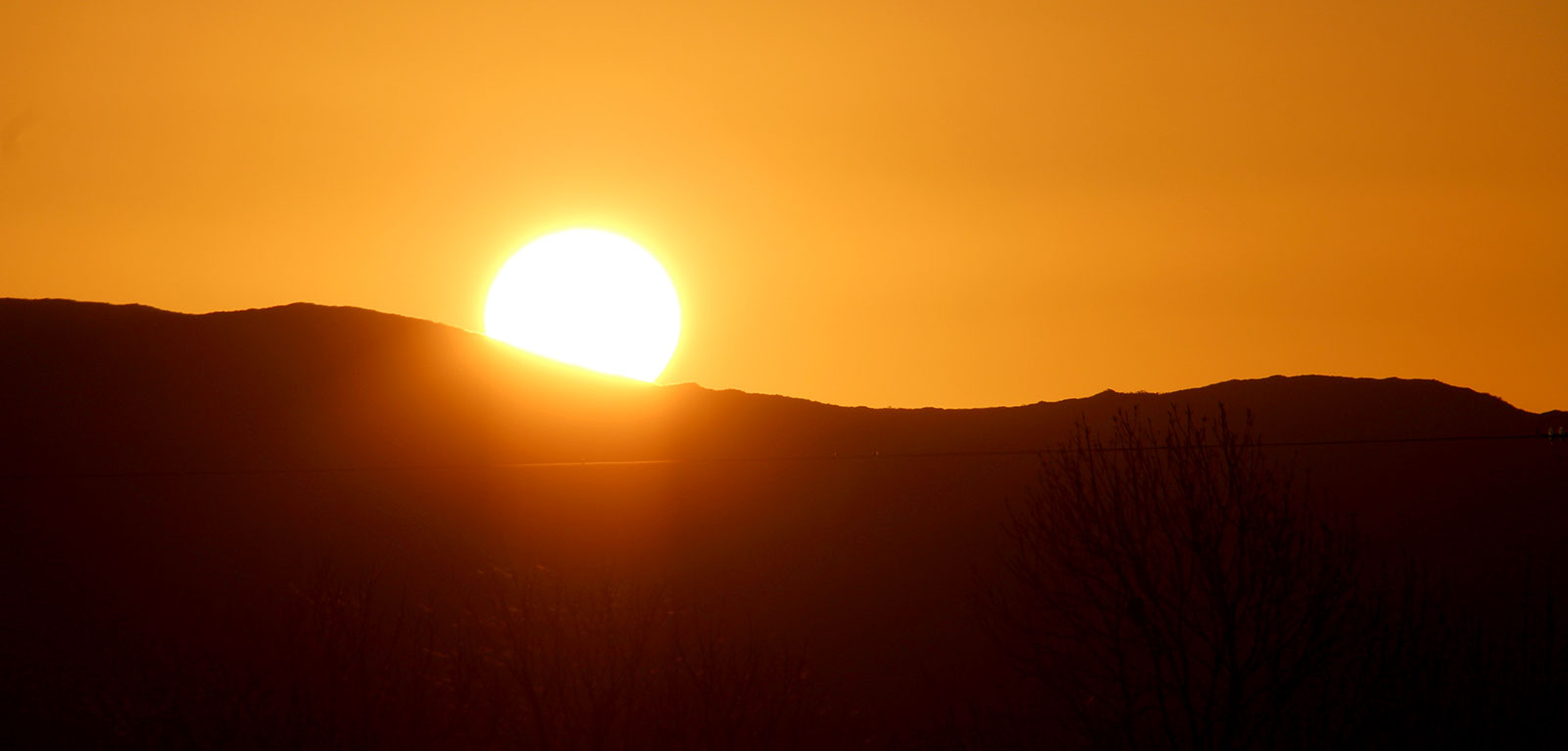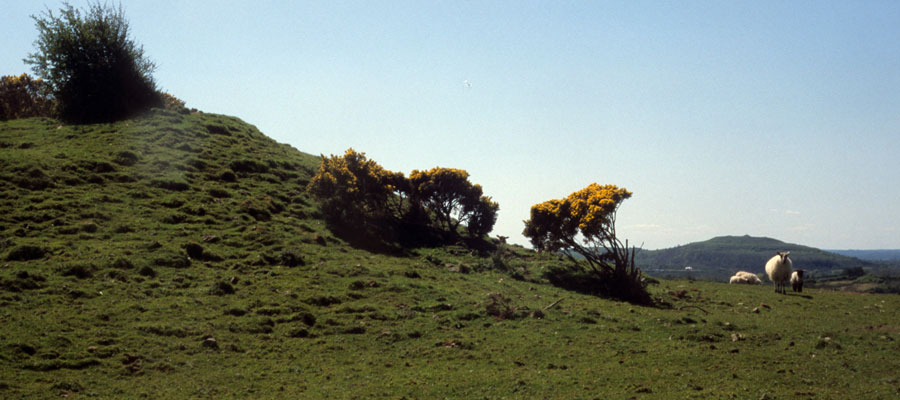Sheebeg
The great Fairy Mound of Sheebeg is a large and rather disturbed cairn on the summit of a low drumlin, just outside the village of Keshcarrigan in Co Leitrim. The mound is about four kilometers east of Sheemor, which is clearly visible to the south-west. The cairn at Sheebeg, a massive heap of quarried stone, measures about 38 meters in diameter.
There are wide panoramic views across the landscape from the top of the cairn, which once again demonstrates the importance of location in relation to these monuments. It is said that lakes in five counties can be seen from this spot. The cairn itself stands out on its summit and is highly visible from the surrounding landscape. There are several other ruinous megalithic remains in the locality.
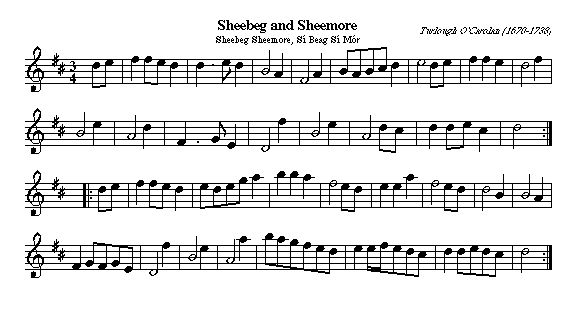
The Giant's Grave
Sheebeg is known locally as the grave of Fionn Mac Cumhal, a legendary giant who is also allegedly buried within the chamber at Listoghil, the focal monument at the Carrowmore Megalithic Complex in County Sligo. The cairn of Sheebeg is thirty-eight meters in diameter and about six meters high and is constructed on the highest point of Sheebeg hill, 145 meters above sea level. The disturbed top of the cairn was flat and about twelve meters in diameter before it was dug into; there is an oblong trough or depression still vsisble from the 1930's excavations.
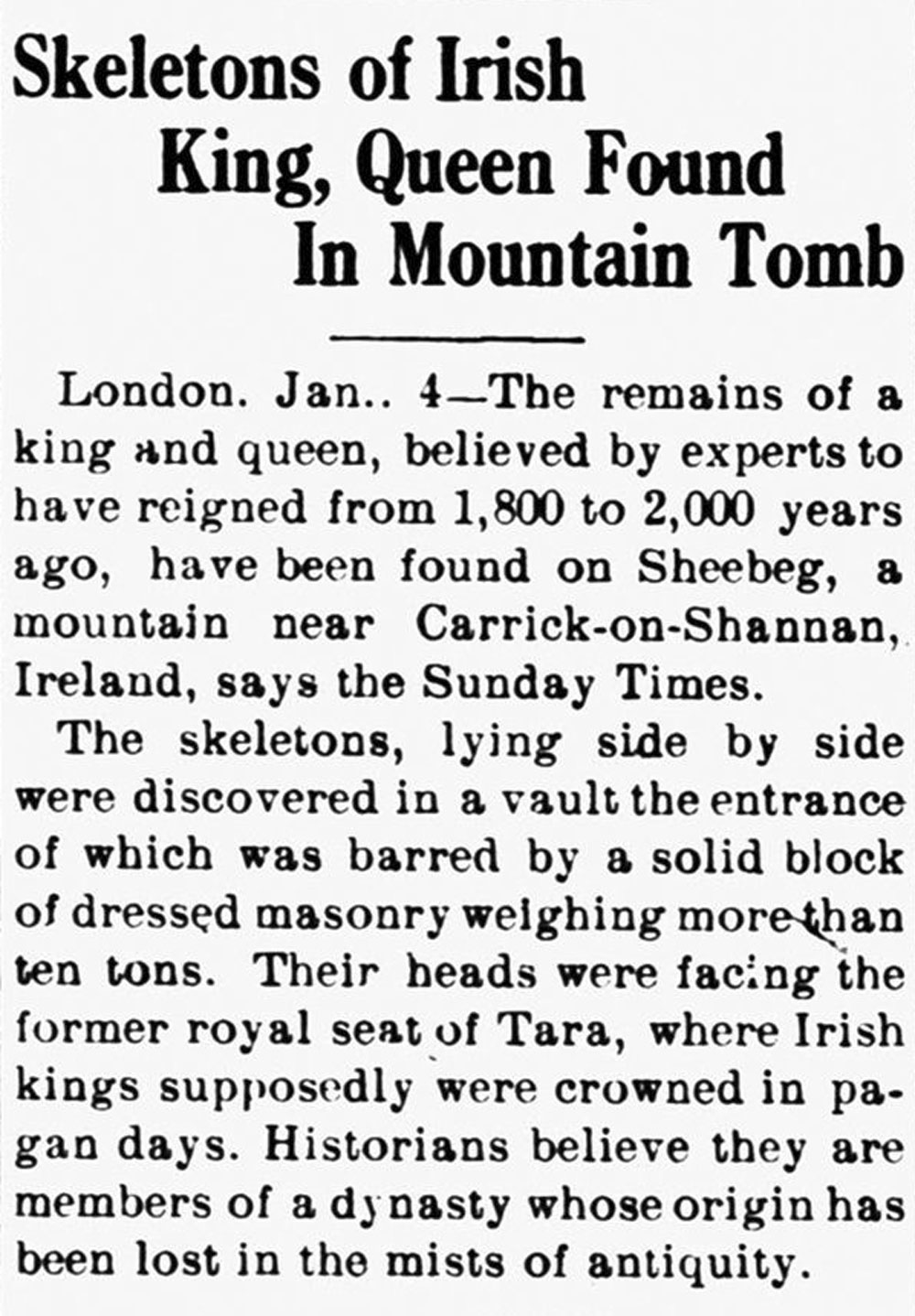
In January of 1931 a local opened the mound. He dug down through the top of the cairn, and into a large megalithic chamber where he allegedly discovered two massive skeletons. These skeletons were displayed for a time in a shed in the village of Keshcarrigan nearby, and could be viewed by the public for a charge of sixpence. However, when the man's mother had a series of disturbing nightmares she insisted he replace the pair of skeletons in their grave.
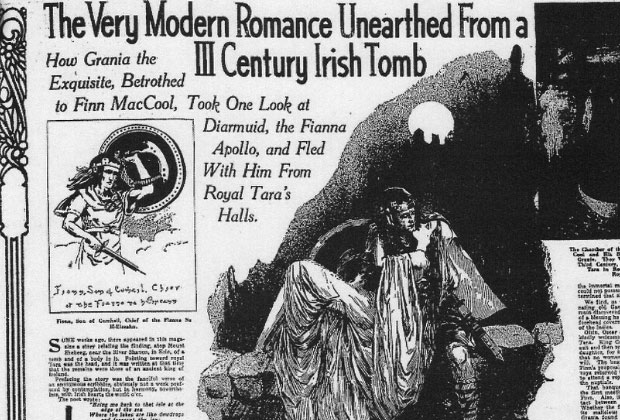
Two cairns can be seen from my house namely Sheebeg and Sheemór. A good view of those two cairns can be got from any side of them. When seen from afar they are like sisters in shape. Sheebeg being one field from my house is the smallest. One side of it is almost straight and it is about fifteen feet high. The other side slopes away gently.
This cairn is about twenty yards in circumference. The land around it is dry and rocky. Shebeg cairn is now covered with grass and earth. but small stones appear in some places. On one side of the cairn a bush and whins grow. Years ago it was thought that Fionn Mc Cumhail was buried under the cairn, and people came to dig it. A nephew of master O'Hara's and a man named Mahon dug it. This excavation was done in winter 1930. After some digging they came to a chamber of flags. This room contained the bones of two people.
Those bones were kept in Peter Connell's barn, because it was in his land they were got. Peter Connell had to leave the bones where they were got. He would be put to jail but he did not know the law. The top of the cairn was level before the excavation, but now there are stones here and there on the top of it. The place where the bones were got cannot be seen.
At one time there was a stone lying on the ground between the cairn and the road. This stone was three feet in thickness and three feet wide. The track of three ass shoes were to be seen this stone. People broke it for corner-stones for a house.
Lizzie Beirne. Source.


